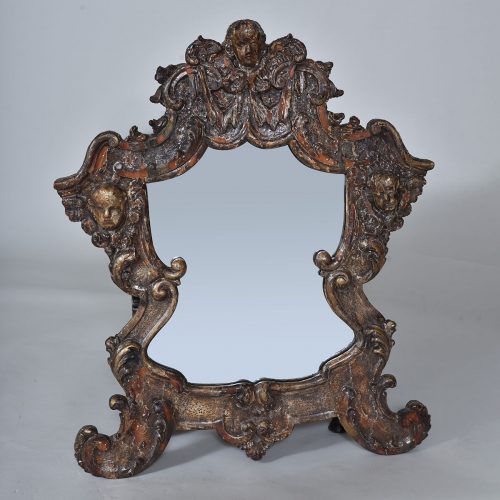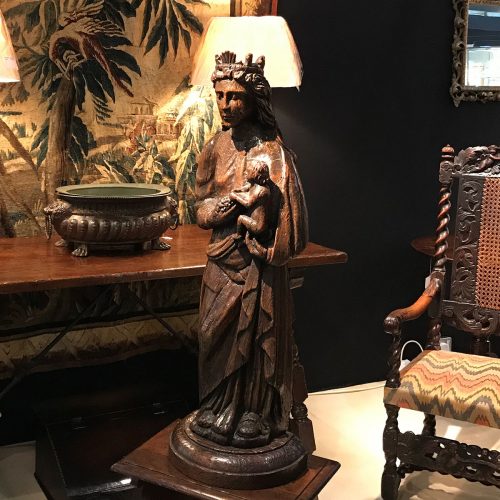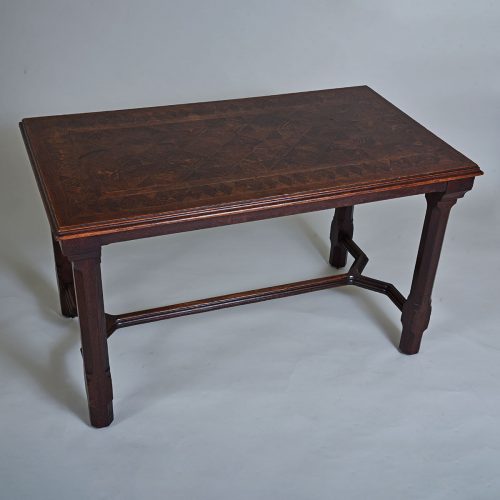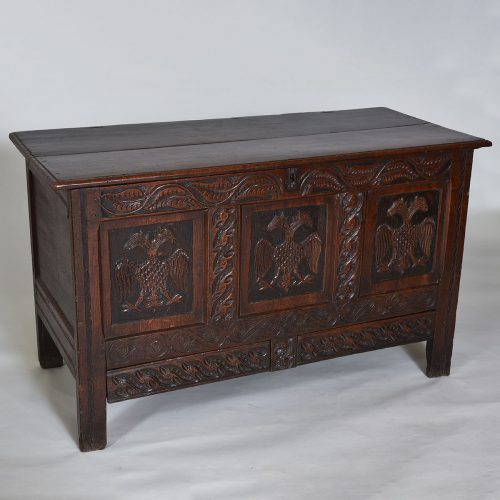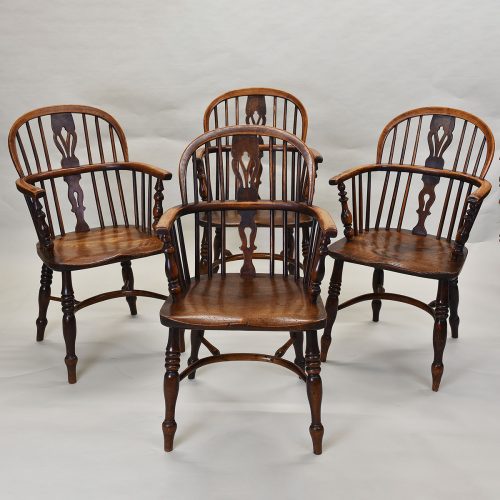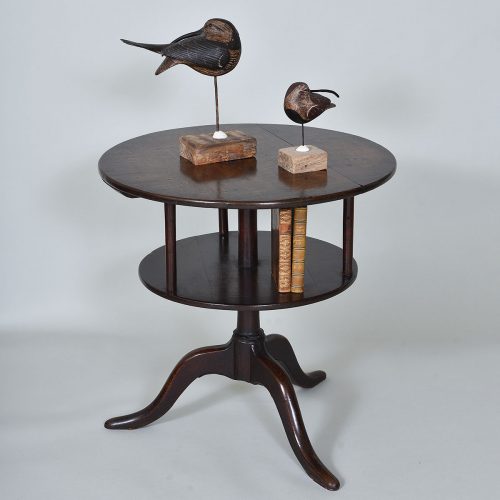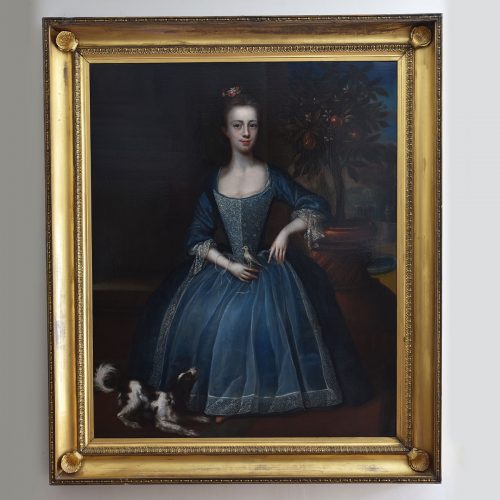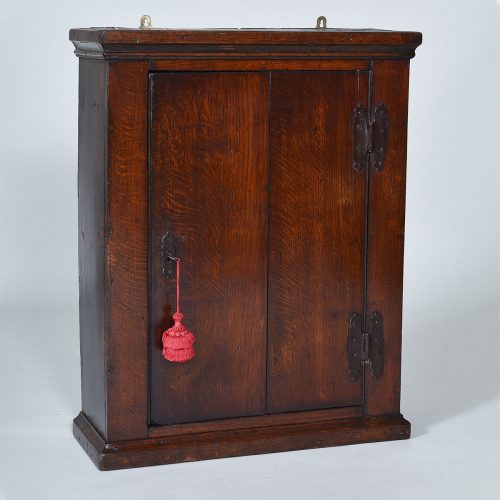Current Stock
-
SOLDLate 17th/early 18th century Mirror with original surface - Possibly Spanish Width: 24.5" / 62 cms Height: 30" / 77 cms
-
SOLDImpressive Pair of Baroque Spanish Columns carved in spiral form with cherubs, vines and birds - original polychrome, gold and silver leaf surface - Early 18th century - POA Height: 85" / 216 cms
-
SOLDLate 16th century carved Oak Madonna and Child - probably French - lovely detail to the Madonna's head and the child Width: 13" / 33 cms at base Depth: 9" / 23 cms Height: 39" / 99 cms
-
SOLDEarly 18th century Oak Cricket Table of unusual form. Turned legs, under tier and good colour and patination.English Circa 1720 Width: 29" / 74 cms Height: 28" / 71 cms
-
SOLDOak Parquetry Veneered Centre Table by Howard and Sons. Circa 1880. Chamfered legs terminating with original integral brass castors. Printed paper label to underside for Howard & Sons, 27 Berners Street, London Stamped Howard & Sons, Berners St. Provenance Available by Request Width: 46" / 118 cms Depth: 26.5" / 67 cms Height: 27" / 69 cms
-
SOLDRare 17th century Oak Coffer with Blind Drawers - Salisbury Width: 53" / 135 cms Depth: 22" / 56 cms Height: 31" / 79 cms
17th century Oak Coffer with Two Drawers – Possibly carved by the workshop of Humphrey Beckham, Salisbury.
The Coat of Arms of the double headed eagle belongs to the Speke Family. The Speke Family originated from a village Quettehou near Cherbourg in Normandy, settling in England sometime after the Norman Invasion. First records were of a Richard L’Espec born 1110 living in North Devon at Wembworthy. Their estate was called Heywood (today the site of New Eggesford House) Walter Espec (died 1153) was Sheriff of Yorkshire and feudal baron of Helmsley in Yorkshire, built Helmsley Castle, Wark Castle and founded Kirkham Priory and Rievaulx Abbey. Sir John Speke (1442–1518) of Whitelackington, Somerset, was Sheriff of Devon in 1517 and a Member of Parliament (1477) He was knighted in 1501. His monument is the Speke Chantry in Exeter Cathedral in which survives his recumbent effigy. Sir George Speke (1530-1584) had ties to North Yorkshire – he married Elizabeth Luttrell, widow of Richard Mallet of Currypool, the daughter of Sir Andrew Luttrell (1484–1538), feudal baron of Dunster, of Dunster Castle in Somerset, Sheriff of Somerset and Dorset in 1528 by his wife Margaret Wyndham (d.1580), a daughter of Sir Thomas Wyndham (d.1521) of Felbrigg Hall, Norfolk, by his first wife Eleanor Scrope, daughter and heiress of Richard Scrope of Upsall Castle, Yorkshire. By Elizabeth he had a son and two daughters. George Speke (1623-1689) was a supporter of Prince Rupert at Bridgewater. When the town surrendered to Thomas Fairfax in July 1645 he was taken as a hostage and sent to the Tower of London to the Gatehouse Prison. He was released on payment of the sum of £2390 in 1646. From 1661–1662 he served as High Sheriff of Somerset until, in August 1679, he was elected M.P. for Somerset. The precise date of this coffer is difficult to establish. The top rail is carved with leaves depicted in a naturalistic way and is almost identical to that found on the frieze of a table dated circa 1675 - illustrated in Anthony Wells-Cole’s article from the Furniture History Volume XII 1976 Fig 10c Oak Furniture in Dorset. The carving of the double headed eagle on the front three panels is similar to that which can be found on an armchair on the front cover of ‘Oak Furniture – The British Tradition’ by Victor Chinnery – This chair was carved by Humphrey Beckham (1588-1671) and dated 1622 – the back panel bearing the arms of the City of New Sarum (Salisbury) which includes the double headed eagle. It is known that carvers from the workshop in Salisbury crossed the borders to Dorset to work at Chantmarle House– see above. The deep carving to the two drawer fronts is similar to that found on a joined stool with drawer circa 1630 (Page 229 Fig 3:113 Salisbury. A joint stool (dated circa 1630) with a carved frieze rail of scrolling forms Page 152 Fig.2:215 bears a resemblance to the carved rail below the three panelled front. The hinges are a later replacement. -
SOLDLate 18th century oak cricket table. Welsh or English. Three angled legs united by a triangular lower shelf Width: 24" / 61 cms Depth: 24" / 61 cms Height: 25.5" / 65 cms
-
SOLDSet of four ash and elm Windsor chairs . Circa 1830. Crinoline stretchers and 3 ring turning to legs. North country region. Width: 21" / 53 cms Depth: 16" / 40 cms Height: 36" / 91 cms Seat Height: 17" / 43 cms
-
SOLD18th century dumb waiter, rare in Oak. Two tiers above a turned central pedestal on tripod legs. Diameter: Top 25.5" / 65 cms Height: 26.5" / 67 cms
-
SOLDSmall early 18th century English Oak lowboy of rare form and small size. In original condition. Superb colour and patination. Ex Private Collection Width: 26" / 66cms Depth: 16" / 41 cms Height: 28" / 71 cms
-
Oil on Canvas in Giltwood Frame Attributed to Joseph Highmore (1692-1780) Portrait of a young lady in blue lace bodice, holding a bird with her King Charles spaniel at her feet. Highmore was educated at Merchant Taylors School and studied to become a lawyer. He abandoned this for painting and trained at St Martin’s Lane Academy and set up practice in 1715. He continued to study in Godfrey Kneller’s Academy and became one of the most accomplished portrait painters of his age. Highmore was capable of painting with the greatest refinement. Provenance: The Priory, Isle of Wight. Represented at The National Portrait Gallery, London, The Tate, Yale Width: 50" / 127 cms Height: 60" /152 cms
-
SOLD18th century Oak spice or wall cupboard - possibly Welsh. Moulded cornice over a single door, comprised of two planks Width: 23.5" / 59cms Depth: 8.5" / 21 cms Height: 29.5" / 75 cms


